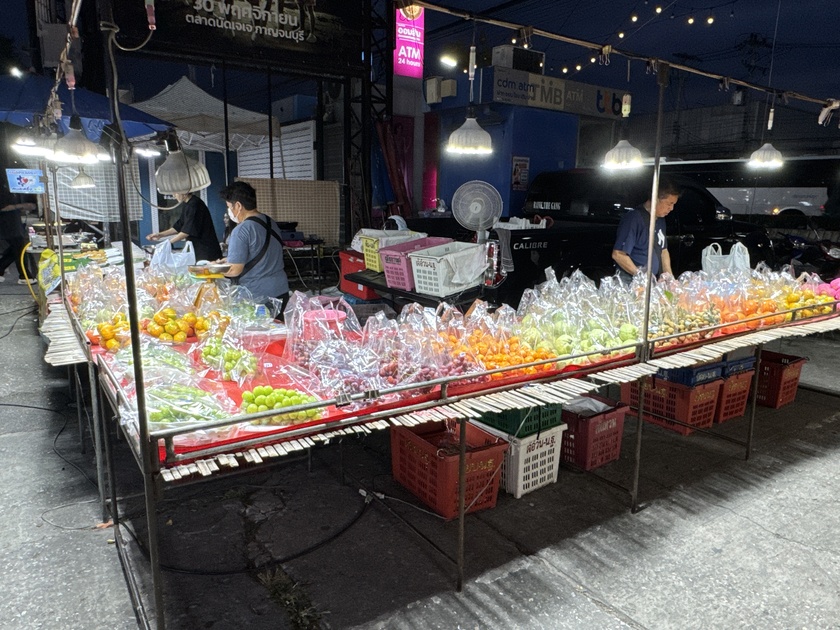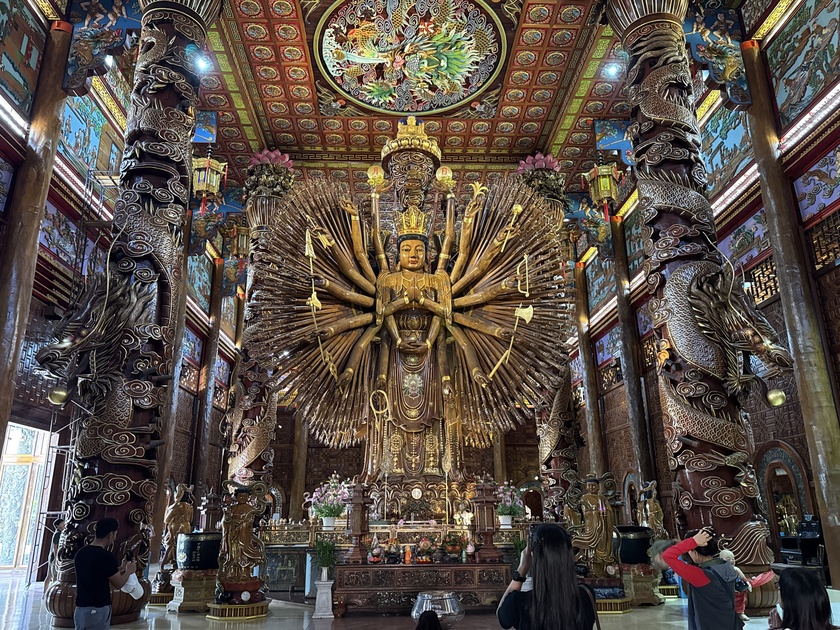The newest Night Market in Bangkok is the Liab Duan 2 (Liab Duan Dan Neramit). It is located near the Sukumvit BTS line in the Chatuchak district of the city. From the 23rd of May to the 1st of June special performances will take place each evening. The market is open from 4pm until midnight with lots of food and shopping at affordable prices.
Night markets in Bangkok offer a unique and vibrant shopping experience that is both culturally enriching and entertaining. Here are several reasons why visiting a night market in Bangkok is a must:
Cultural Experience: Night markets provide an authentic glimpse into Thai culture, showcasing traditional foods, crafts, and local performances. They are a lively and interactive way to engage with the local community and understand the city's heritage.
Diverse Shopping: These markets offer a wide variety of goods, including trendy clothing, antiques, collectibles, handicrafts, and souvenirs. Whether you're looking for unique fashion items, vintage collectibles, or...
JJ Night Market Kanchanaburi
Located near the Kanchanaburi railway station, JJ Night Market is a local night market offering a variety of products and services. It is a busy market with a range of food stalls serving traditional Thai cuisine, as well as shops selling clothing, accessories, and souvenirs.
Located not far from Kanchanaburi railway station, the Kanchanaburi Night Market takes place every evening from around 5 to 9 pm. It is a local market and not geared to tourists making it a great way to experience a bit of Thai culture while trying some of the local favorite foods.
It’s a great way to spend an evening after exploring the area and is a short distance from the famous world war 2 bridge over the Kwai River as well as the majority of hotels.
JJ Night Market Kanchanaburi - Street Food & More - Thailand 2025
Wat Nang Kui วัดนางกุย
Wat Nang Kui or the Monastery of the Lady named Kui is an active temple located
off the city island in the southern area. The monastery is situated along the Chao Phraya River. To its west side lies Wat Khun Phrom and to its south Wat Mai Bang Kaja.
The monastery was built in 1587, a few years after the first fall of Ayutthaya. The construction was sponsored by a wealthy woman called Lady Kui, thus the name of the temple. After the second fall of Ayutthaya the monastery was left empty and neglected until in the Bangkok period during the Reign of King Rama III, the monastery was renovated.
The temple is actually known for its sandstone Buddha image, Mae Takhian Thong and Luang Pho Yim statue.
Historical data about the monastery is unknown.
From the temple you have nearly a straight view on Pom Phet or the Diamond Fort. It is assumed to have been occupied by the Burmese army in the last battle for Ayutthaya in 1767.
Vihara of Mae Takhian Thong
The vihara of Mae ...
Wat Metta Dharma Bodhiyan (Wat Mettatham Phothiyan) Kanchanaburi Thailand
Due to its amazing 12 meter tall Guan Yin Bodhisattva statues carved in teak wood, this fairly recent temple quickly became the most famous Chinese temple in Kanchanaburi.
The covered courtyard which welcomes you does not suggest what you are going to discover inside: a hall with all the partitions and ceilings in carved teak wood. In the middle of which enthroned, back to back, are the 4 statues of the chinse goddess with 18 arms and a thousand smaller arms with a thousand eyes.
In the peripheral corridors, dozens of unique statues are also made of carved wood. Wat Mettatham Photiyan is set to expand to accommodate even more statues. Hundreds more are already stored to the right of the main hall and are waiting to be installed in the new temple buildings.
In addition to one of the most amazing wooden statues you will ever see the temple is currently building a 165 meter tall, with a base of 108 meter, Buddha Statue. ...




















































